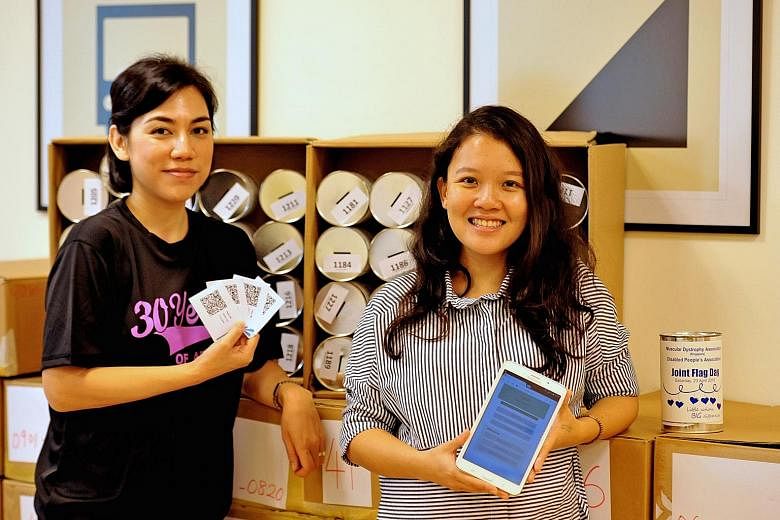It was a paperwork nightmare for the Disabled People's Association (DPA) whenever its flag day came around every two years.
There would be up to 2,000 collection tins to be matched to at least 1,000 students, and every movement would be tracked on scores of papers at 10 locations. This manual process was time-consuming and forms would get lost.
But things are expected to improve, after the voluntary welfare organisation (VWO) pumped $80,000 into developing a software to automate a large part of flag day. Called Project Tintin, the software generates a QR code for each volunteer and staff member, down to the drivers transporting the tins.
Each time a tin changes hands, the QR code is scanned so the software knows where it is, who is holding on to it, and for how long. The software will debut today for DPA's flag day.
DPA executive director Marissa Lee Medjeral-Mills said: "We want to track where things are at all times and be as careful as possible about the money."
Now, organisers no longer need to search for a student's name on sheets of A3-sized paper.
Instead, it takes just a second to fill out the tin number on a smartphone or a tablet running the software. Each volunteer has a unique QR code attached to his or her name, identification number, school, e-mail address and phone number. Tin numbers can be quickly linked to each volunteer.
This also means supervisors at collection centres no longer have to fill up individual forms for the students, and count the number of hours they volunteered for.
"We can just e-mail them a certificate of participation at the end of it," said Dr Medjeral-Mills.
DPA engaged ThoughtWorks to develop the software.
Ms Cheong Yian Ling, user experience designer at ThoughtWorks, said: "It started from a process of discovery. What about flag day do we want to solve?
"It took quite a bit of time to narrow it down to tin management."
Today, DPA is sharing its flag day with the Muscular Dystrophy Association Singapore. Collections will be shared equally between both organisations.
DPA is looking to share Project Tintin with other VWOs, and has invited the National Council of Social Service to observe how the software works. They also hope that having other charities use Project Tintin will give them more data.
Said Dr Medjeral-Mills: "Is Orchard Road really doing that well? Is it worth sending more students there? We can also look at yearly trends and which months are best for collecting donations."
The software could be developed further with more investments.
For instance, volunteers' locations can be tracked to know if an area is overcrowded.
"The way we do flag day has to change," said Dr Medjeral-Mills.


